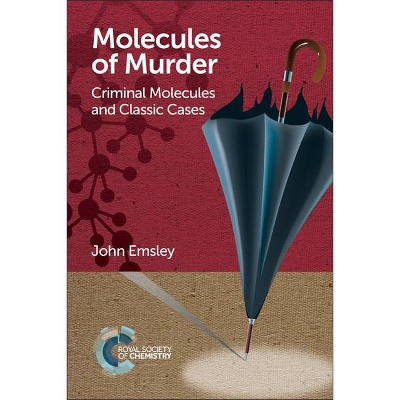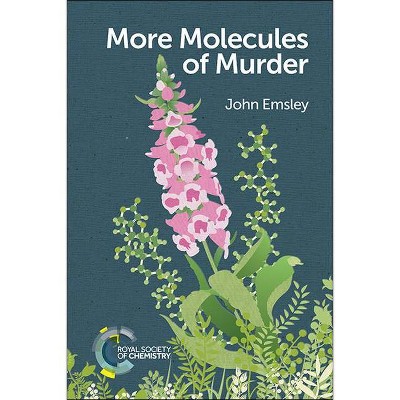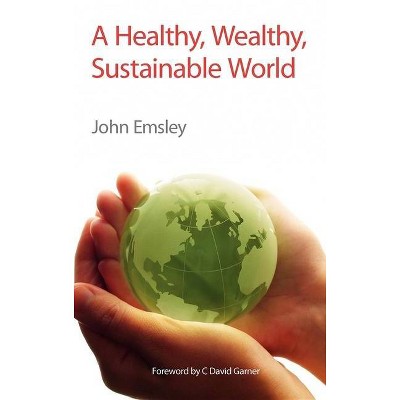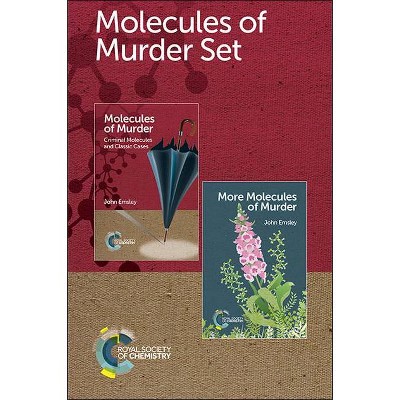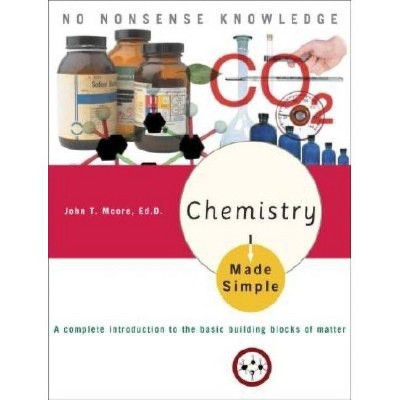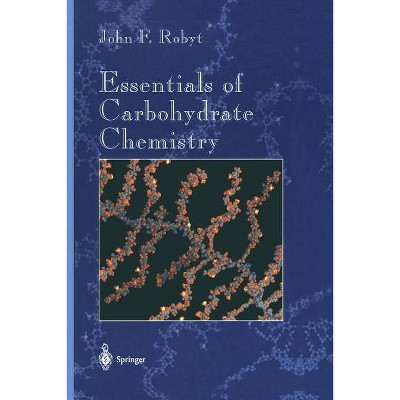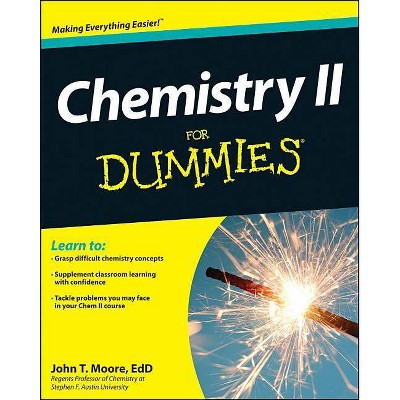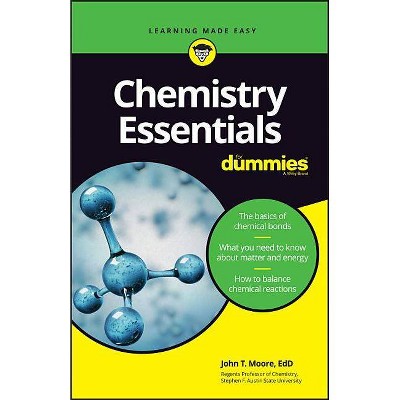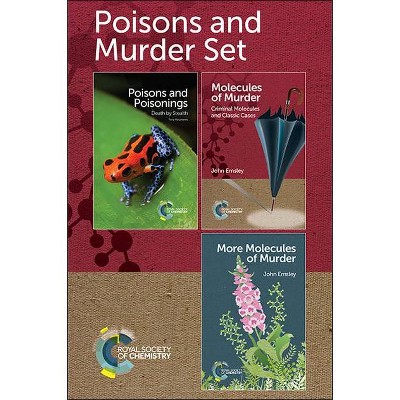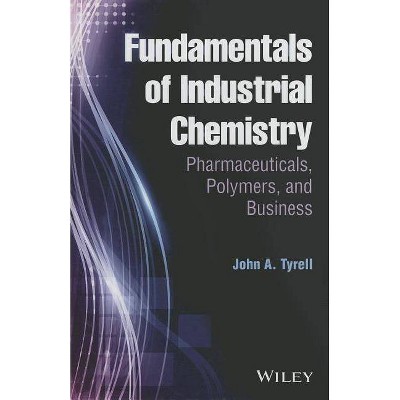Chemistry at Home - by John Emsley (Paperback)
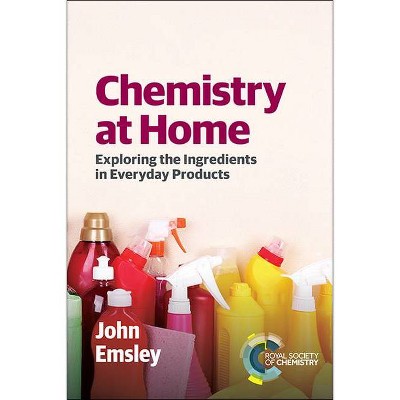
Similar Products
Products of same category from the store
AllProduct info
<p/><br></br><p><b> About the Book </b></p></br></br>This accessible book aims to de-mystify the part chemicals play in the products we have in our home and what benefits they bring.<p/><br></br><p><b> Book Synopsis </b></p></br></br>Ever wondered what was in the toothpaste you were cleaning your teeth with or the low-fat spread you were eating? How glue sticks or what's in insect repellent? This accessible book aims to de-mystify the part chemicals play in the products we have in our home and what benefits they bring. Written in an appealing style, the reader will be taken on a journey of discovery around the house gaining information on and explanation for the chemistry we have in our everyday existence.<p/><br></br><p><b> From the Back Cover </b></p></br></br><p>Hand cream, detergent, shower gel, toothpaste, toilet cleaner, air freshener, lipstick, perfume, low-fat spread, painkiller, diet drink, insect repellent... hundreds of everyday products that make our lives so much better than those of our forebears. And yet most of us know little about the ingredients they contain and why they deliver the benefits we enjoy. <br>Some people find it worrying when they examine the list of ingredients on a packaging label, because all they read may be unintelligible names or E numbers. It appears to be just chemicals, chemicals, chemicals. The aim of this book is to examine the ingredients more closely and explain the reasons for their being used.<br>Start reading and stop worrying.<br>Chemistry at Home has been written by award-winning popular science writer and chemist, John Emsley, using non-technical language. The book has 12 chapters, each devoted to the kinds of products we are likely to find around the home, including in the garage and the garden shed. Chemistry at Home also includes a glossary which gives more technical information about the molecules mentioned in the book.</p><p/><br></br><p><b> Review Quotes </b></p></br></br><br><p>'an outstanding book by British chemist John Emsley'</p>--Joe Schwarcz "CJAD 800 radio"<br><br><p>I am sure that one reason for some misconceptions about chemicals is that little is taught in schools about their everyday applications and uses. That's not the fault of the teacher in the classroom - they have a specification to teach and a lot to fit in. Of course, all packaging carries lists of ingredients that may provide some limited insight, but it is sometimes difficult to know what they all do. </p> <p>For many years, the go-to resource was Ben Selinger's Chemistry in the marketplace, while John Emsley has provided much cogent material in books like The consumer's good chemical guide and Vanity, vitality and virility: the science behind the products you love to buy.</p> <p>The latest edition of Selinger's book first appeared in 1997, so it's time for a spring clean of the literature, and that is what we are given in Emsley's Chemistry at home. Before you get to grips with all of the different consumer products described in the book, there's an alphabetical list of technical words. The chemicals are grouped by the part of the home in which they are found - the medicine cabinet; the utility room; the bathroom; the desk; the toilet; the cupboard under the stairs; the bedroom; the kitchen; the dining room; the living room; the garage; and the garden shed. Ingredient lists are given for well over 150 different products, a representative selection of what is on the market, and for each product there is a breakdown giving the purpose of each ingredient. </p> <p>So, taking Savlon as an example, we are informed that cetrimide, the active ingredient, enters the microbial cell membrane and causes cell death by interfering with vital proteins. There are three other antibacterials involved and it also contains compounds with emollient and thickening properties, plus an unnamed fragrance and sterile water. </p> <p>If you, as a chemist, want to find out more about a particular chemical, simply look in the alphabetical glossary at the end of the book, which supplies further information, usually including a structure, but keeping it separate for the benefit of readers who are fazed by this sort of thing. </p> <p>This book is highly recommended, not least to teachers, and is an antidote to smear stories in the media. We should all have a copy on our bookshelves - it is very browsable, and you never know when some of the many bits of information it contains will come in handy. As the back cover says, 'start reading and stop worrying'.</p>--Simon Cotton "Chemistry World"<br><br>This book is highly recommended, not least to teachers, and is an anidote to smear stories in the media--Simon Cotton "Chemistry World"<br><br>We should all have a copy on our shelves - it is very browsable, and you never know when some of the many bits of information it contains will come in handy--Simon Cotton "Chemistry World"<br>
Price History
Cheapest price in the interval: 31.49 on October 27, 2021
Most expensive price in the interval: 31.49 on December 20, 2021
Price Archive shows prices from various stores, lets you see history and find the cheapest. There is no actual sale on the website. For all support, inquiry and suggestion messages communication@pricearchive.us
